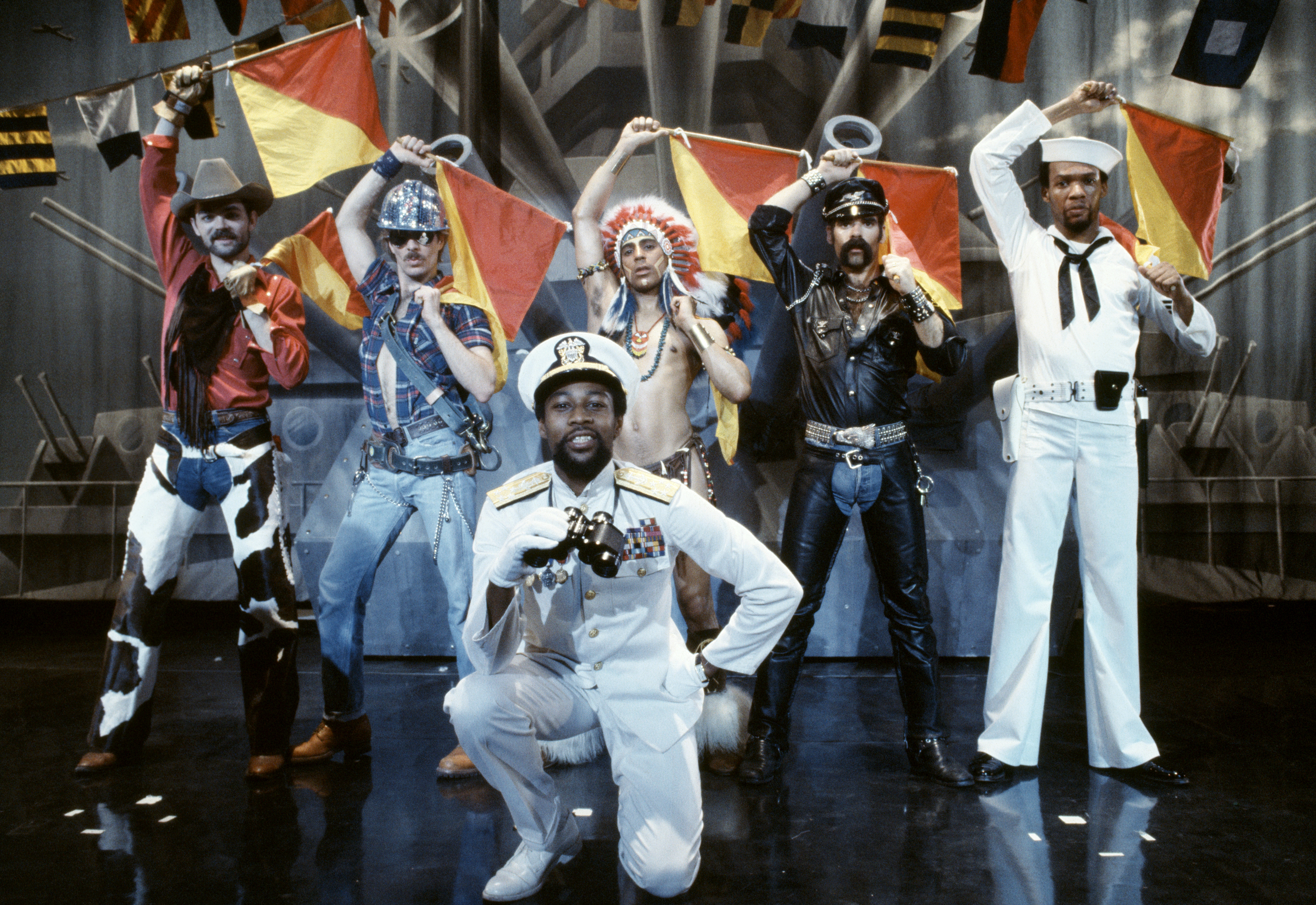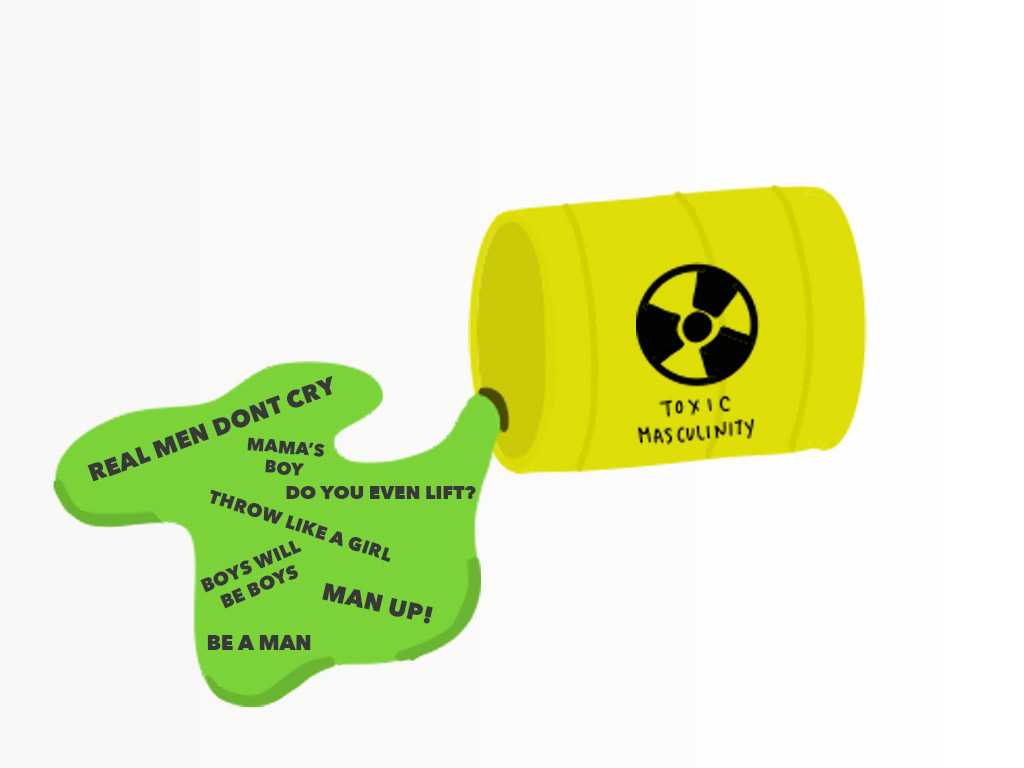
The band Village People (Victor Willis, Randy Jones, David Hodo, Felipe Rose and Glen Hughes) are in New York to present their new record (Atlan).
As discussed earlier, the Village people are composed of a cowboy, a police officer, a construction worker, a leather man, a soldier, and a Native American. But, what is the point of the performers adopting these personas and wearing campy, hyper-masculine costumes? According to musicologist Michael Campbell in his book Popular Music in America: The Beat Goes On, the Village People’s costumes played off the “macho stereotypes among gays,” and “these expressions of hyper-manliness were, in effect, gay pinups” (267). In other words, gay men idolized these muscular, strong men as sex icons, so the Village People adopted these personas to satisfy and build-up their fan base.
However, to extend Campbell’s argument, it is also important to point out that they were critiquing how mainstream, heterosexual America view gay men. Typically, when people are asked to think about a young gay man, they automatically create an image of a skinny, feminine man. But, this is extremely wrong, for just like heterosexual men, homosexual men come in all shapes, sizes, and fashions. So, for a gay music group to adopt these hyper-masculine personas, the Village People were able to completely flip this stereotype onto its head, showing that gay men can also be the quintessential masculine figure of American culture. As a result, this empowered many gay men because the Village People were critiquing the negative light that homophobic America shined upon them.

The above image illustrates toxic masculinity (Tally).
Not only did the Village People’s portrayal of gay men as masculine figures empower gay men, but it also humanized them. This was exemplified throughout the “Y.M.C.A.” music video, for the camera shows the Village People dancing and singing in the streets, parks, and beach of New York City, illustrating that gay men are “normal” people who can be just as masculine as heterosexual men. By humanizing gay men in this way, the Village People promoted homosocial bonding, or non-sexual relationships between gay and straight men. These hyper-masculine characters showed straight men that gay men work the same jobs and live the same lives as them. Lastly, social historian Alex Midgley shared the following quote from Michael DeAngelis, a media and cinema studies professor, “‘[The Village People’s] hard male bodies [became] what straight men want to be, what straight women want to have, and what gay men want to be and to have'” (107). This quote supports the points made earlier by pointing out that straight men were trying to reach this level of masculinity that the Village People were portraying because they wanted to appeal to women, just like the group was able to successfully do. This humanizes gay men and promotes homosocial bonding because toxic masculinity in America places a humongous emphasis on a man’s sexual experiences and ability to attract women as a measure of a man’s desirability. Simply put, since many straight women were attracted to the Village People, straight men began to respect gay men more because they were seen as sexually desirable by women, and this stems from America’s toxic masculine culture that measures a man’s prestige by the number of sexual partners a man has. Given all of this, the Village People’s hyper-masculine costumes and “Y.M.C.A.” video humanized gay men and promoted homosocial bonding.
Not only does their hyper-masculine dress and appearance humanize gay men, but it also complicates the societal norms of toxic masculinity, which relies heavily upon depictions and notions of physical strength and sexual dominance. The personas they adopt are all figures of pure masculinity, for the cowboy, police officer, construction worker, soldier, leather man, and Native American represent physical strength, dominance, and manliness. This complicates toxic masculinity because how can a gay group be masculine if gay men are seen as more feminine and submissive? By complicating these norms and constructing an image that gay men can be just as masculine as heterosexual men, homosocial bonding was promoted because heterosexual men began to question these societal norms of toxic masculinity.
Homosocial bonding, as well as bonding with heterosexual women, was also promoted through various musical elements of “Y.M.C.A.” For instance, the solo vocals of Victor Willis, the cop, are repeatedly joined by the rest of the group towards the end of many lines. This vocal harmonization promotes bonding, for like the group’s voices coming together, the gay and straight communities should bond together over their love for the Y.M.C.A. In other words, the closed vocal harmonies provide a sense of community. This is also supported by the girl-group claps, for the Village People are able to connect and bond with their audiences, even if they are heterosexuals, through clapping together. Lastly, throughout the song, the sound of bass instruments, specifically the trumpet, can be heard. The trumpet, which is a historical symbol for a call to war, is calling for people to come together and perform the signature Y.M.C.A. dance. Through their campy, hyper-masculine looks and their catchy “Y.M.C.A.” song, the Village People promoted homosocial bonding, and their simple, entertaining dance united the gay and straight communities on an off the dance floor, even if the two groups were celebrating Y.M.C.A. for different reasons.